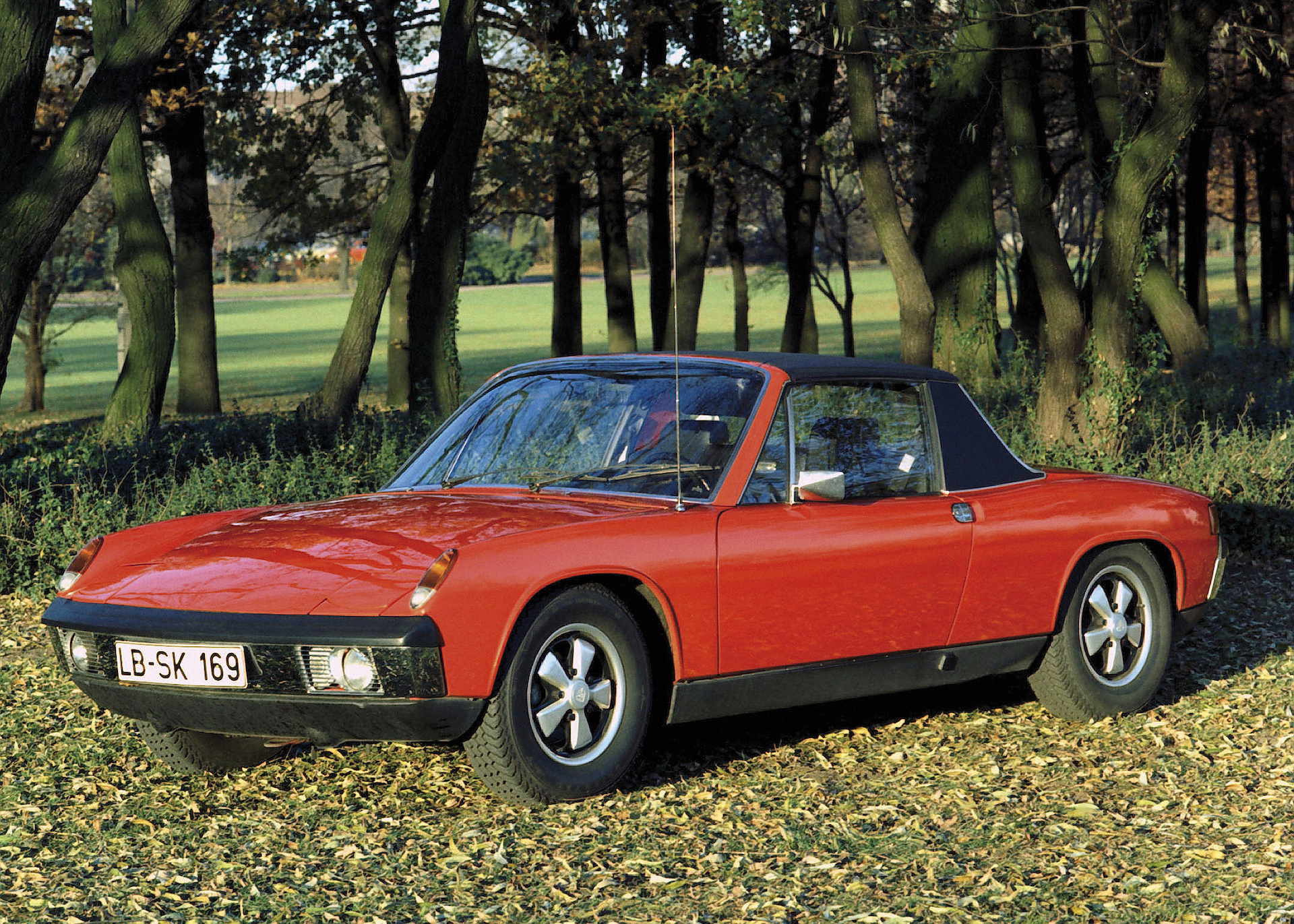Mercedes has provided AMG-badged safety cars for every F1 race for the past 25 years, sending everything from a C36 sedan to the SLS sports car out in front of the pack when the yellow flags were waving.
But this year, the AMG GT R that has acted as safety car since 2018 is joined by an Aston Martin Vantage. The green Aston coupe is equipped with a lightly tuned version of the 4.0-liter AMG V8 to help it stay ahead of the F1 pack, and fitted with a giant rear wing and an even bigger roof-mounted light bar.
It’s a far cry from the wild-west days before Mercedes secured the safety car deal in 1996, when race organizers often seemed to use whatever was lying around in the parking lot.
Related: This Aston Martin Vantage Is Formula 1’s New Safety Car
1973 Porsche 914
F1’s first safety car appeared in 1973 at a rain-soaked Canadian Grand Prix when Eppie Wietzes caused chaos by placing his Porsche 914 ahead of the wrong driver, allowing multiple other cars to gain time.
1981 Lamborghini Countach
A decade on from the 914 came the coolest safety car of all time. A Lamborghini Countach did the honors at the Monaco Grand Prix three years running during the early 1980s. But the good times weren’t to last: the Lambo was followed by a couple of real stinkers.
https://youtu.be/psrulAemMg0
1993 Fiat Tempra
First came a Fiat Tempra, Fiat’s answer to the Volkswagen Jetta, during the 1993 season, followed by an Opel Vectra, which has sometimes been cited as a potential factor in the death of Ayrton Senna at the 1994 San Marino Grand Prix.
https://youtu.be/BbWkrHYhE1g?t=1337
1994 Opel Vectra
After an earlier crash on race day the Opel was called out onto the track where it drove extremely slowly for five laps because its brakes were cooked, allowing the tires of the racecars behind to cool significantly, something that may or may not have to do with Senna’s fatal accident.
1995 Porsche 911 GT2
Lesson seemingly learned, the safety car recovered its mojo in 1995 when the job was given to a Porsche 911 GT2. With its 424hp 3.6-liter flat six and fat rubber under riveted on arch extensions, the GT2 looks almost as home on the circuit as the open-wheelers.
https://youtu.be/bfLDHQ8VmSo?t=2582
1996 Renault Clio Williams
But then things went from the sublime to the ridiculous when a Renault Clio was called up for service at the at the 1996 Argentine Grand Prix. It was at least a Clio Williams, the finest hot hatch of the 1990s (if you exclude the Escort Cosworth that served as safety car at the British GP in ’93). But with a top speed of 134mph it was still light years from F1 pace – and around 60mph down on the incoming Aston Martin.
1996 Mercedes-Benz C36 AMG
Mercedes kicked off its 25-year safety car career with the C36. This AMG-built rival to the BMW M3 served up 276hp courtesy of a 3.6-liter straight six, but the automatic transmission wasn’t idea for hot lapping in front of a load of F1 cars.
2001 Mercedes-Benz SL55 AMG
The idea of a Mercedes SL keeping a pack of F1 cars at bay would have seemed laughable in the 1970s or 1980s. But by 2001, armed with air suspension and Merc’s mighty 5.5-liter supercharged V8, it wasn’t quite so crazy. The SL served as safety car for two years before giving way to the CLK coupe.
2010 Mercedes SLS AMG
Gullwing doors came to Grand Prix racing in 2010 when the Mercedes SL 63 AMG safety car was switched for the new SLS. The aluminium SLS was far better suited to the task because its rear-mounted gearbox dramatically improve the weight distribution.
2018 Mercedes-AMG GT R
The GT S version of Merc’s 911 rival was F1’s official safety car from 2015 to 2017, but was replaced by the more track-focused GT R for 2018. The GT R’s suspension was better suited to track work and the 4.0-liter V8’s output was bumped from 515hp to 577hp.











